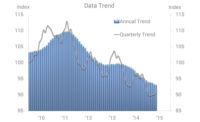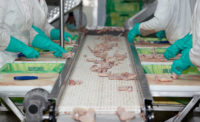The recent run-up in the U.S. stock market is real and should continue at least through 2010, according to economist Dr. Donald Ratajczak. He was speaking to feed ingredient-purchasing managers at the 2009 Grain Forecast – Economic Outlook Conference. The annual seminar is sponsored by U.S. Poultry & Egg Association’s Poultry & Egg Institute.
“There are some concerns, but I believe the current bull market that began in March is solid and will last a couple of years,” Ratajczak said. “I see nothing to suggest this rally is running out of steam. However, some rest probably is appropriate. Are we out of the recession? Probably not, because the labor force still has not stabilized. The economy grew in the third quarter, but it didn’t create jobs. The growth came from government spending.”
Productivity has increased, Ratajczak added, so fewer workers are producing more. Meanwhile, the number of hours has not increased, and the economy is still losing jobs.
“Real purchasing power is not being generated despite growth in economic activity,” he said. “And, I cannot rule out the alternative that the stimulus fades without gains in sustainable real purchasing power, causing a second dip, though much milder.”
Ratajczak said that to add real purchasing power, the economy needs to create more paychecks and add hours paid. The key, he explained, is jobs.
“I am more hopeful here, and even expect to see a slight gain in the workweek in the next employment report,” he said. “So, the decline at least is slowing. It will soon bottom out.”
Ratajczak added that he believes the Fed will keep interest rates near zero through the middle of 2010.
Grain outlook
Looking at the grain market, Steve Freed, ADM Investor Services, offered his outlook in a Grain Forecast presentation.
“The U.S. needs to bump up corn production in the long run,” Freed said. “The biggest factor in corn supply recently has been ethanol. And the trend in corn used for ethanol is clearly higher. Consequently, the energy bill could be more important for corn supply than the farm bill. The other major factor will be increased worldwide consumption, and the big question mark is China. But we definitely need to increase corn production.”


